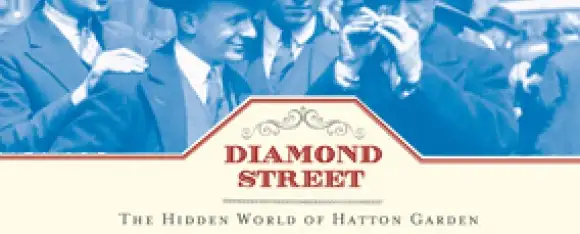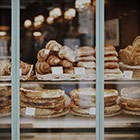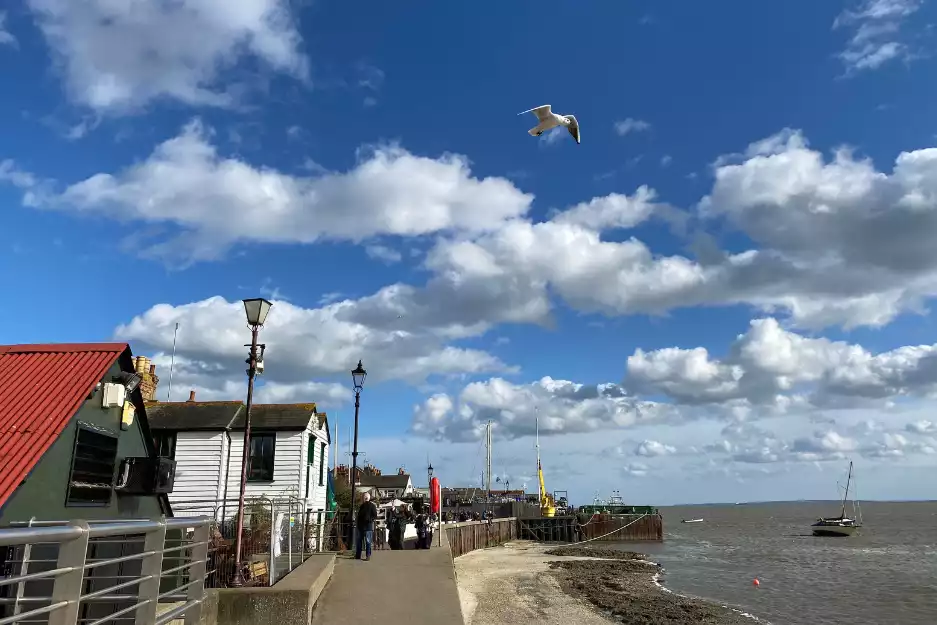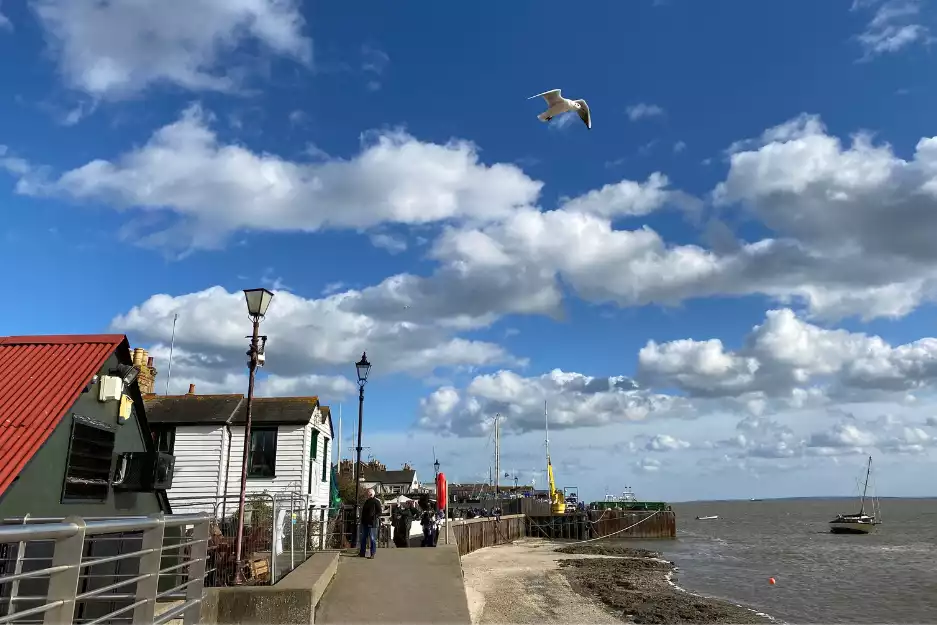-
AllAnytime Fitness Gym Art Beer Of The Week Blog Bus Fares Bus Service Business Business Expo C2C Care Care Home Charity Children Christmas Cinema City Status Cliffs Pavilion Cliffs Pavilion Review Cocktail Recipes College Community Competition Construction Coronation Coronavirus Dannielle Emery Design Easter Education Electoral changes Leigh on sea Emma Smith Employment Emsella Chair Environment Essex & Suffolk Water News Essex Police Essex Wildlife Trust News Events Family Fun Fashion Festival Film Finance Fitness Food Food & Drink Football Foulness Bike Ride Fresh Face Pillow Company Gardening General Election Hair & Beauty Halloween Harp Havens Havens Hospice Havens Hospices Havens Hospices Health & Fitness Health & Beauty Health & Fitness Healthwatch Southend Historicaleigh History Holidays Housing Indian Indirock Jubilee Karen Harvey Conran Kids Kids Blogs Kids Competitions Kids Reviews Lazydays Festival Legal Legal Eagle Leigh Art Trail Leigh Folk Festival Leigh Library Leigh On Sea Finds Leigh Road Leigh Town Council Leigh Town Council Press Release Leigh on Sea Leigh on Sea Sounds Leigh on sea Folk Festival Leigh on sea Marathon Leigh on sea Town Council Leigh on sea man breaks marathon record Leigh on sea news Lifestyle Livewell Southend Press Release LoS Shop London London Southend Airport Los Shop Marathon Melinda Giles Mortgage Angel blog Mortgages Motherofalloutings Mughal Dynasty Music My Mortgage Angel MyLoS NHS News News Newsletter Offers Outfit Of The Week Palace Theatre Parenting Parking Pets Picture Of The Week Pier Politics Press Release Press Release Southend City Council Professional Property Property Of The Week RSPCA Ray Morgan Re:loved Recipes Recycling Restaurant Restaurant Review Restaurants Review Roads Rotary Club Royal Hotel Royal Visit SAVS Schools Seafront Shopping Shows & Music Review Shows & Music Shows & Music Review Southend Southend Airport Southend Borough Council Press Release Southend City Bid News Southend City Council Southend City Council Press Release Southend City Council Press Release Southend Community Safety Southend Hospital News Southend In Sight Southend In Sight Southend In Sight Press Release Southend on Sea Sport The Mortgage Mum The One Love Project The Ship Hotel Theatre Theatre Blog Theatre Review Theatre review Transport Travel Travel Veolia Village Green Volunteer Weddings Whats On c2c
"Diamond Street" The Hidden World of Hatton Garden by RACHEL LICHTENSTEIN

Diamond Street
The Hidden World of Hatton Garden
RACHEL LICHTENSTEIN
Published by Hamish Hamilton on 7th June 2012, £20 Hardback, £20 eBook
Hatton Garden is the fold in the map. One of the most secret streets in England and home for two centuries to a deeply private working community of diamond and jewellery dealers. Rachel Lichtenstein uncovers their hidden world.
Since Diamond Street was launched in June 2012 Rachel has received rave reviews in The Guardian, The Sunday Times, Telegraph, The Observer, The Independent, The Literary Review and The Evening Standard, to name a few. The book has also been featured on BBC London News, Radio 4's Midweek and the Robert Elms Show (BBC London station).
***
Intimately connected to the area both personally (through family) and professionally, (as an archivist of London streets) Lichtenstein is uniquely placed to explore the extraordinary history of this mysterious quarter, with its ancient burial sites, diamond workshops, underground vaults, subterranean rivers, monastic dynasties and forgotten palaces.
Moving beyond the street itself into parts of Clerkenwell, Holborn and Farringdon, Lichtenstein follows the ancient perimeter of the original Hatton Garden estate, which once bordered the lost River Fleet. Guided on her walks by archaeologists, sewer flushers, artists, goldsmiths, geologists and visionaries of the city such as Iain Sinclair, she crosses the same territory repeatedly, gathering new layers of the story with each journey. The result is a brilliantly immersive and multi-layered portrait; both a documentary and a secret history of a vanishing world.
***
Lichtenstein has many family connections to Hatton Garden: her grandfather used to trade with dealers there before the War, her parents have a jewellery business in the street, which her husband now runs and her aunts and uncles have all worked there at different points meaning Hatton Garden is a place she has known all her life. These family ties have enabled her to have unique behind-the-scenes access to a highly secure and private working world, which has never been written about in detail before.
Rachel Lichtenstein is an artist, writer and curator. She is currently writing a trilogy of non-fiction books for Hamish Hamilton on different London streets. The first, On Brick Lane, was published in 2007 to much critical acclaim and shortlisted for the Ondaatje prize. Diamond Street: The Hidden World of Hatton Garden is the second in the series. A volume on Portobello Road will follow.
To accompany the publication of Diamond Street, Lichtenstein has created new artwork based on the stories she uncovered whilst researching the Hatton Garden book, which has been shown at contemporary art gallery Tintype - perfectly located in the heart of Hatton Garden in a former watchmaker’s workshop. http://www.tintypegallery.com/exhibitions/ and is touring to Pittsburgh's renowned digital arts space Woodstreet Gallery in September 2012 where Rachel will be exhibiting her work in a major new show called The City & The City: Contemporary Artworks by London Writers.
Extracts from ‘Diamond Street’:
***
My main memory of Hatton Garden during the 1930s was of seeing deals being conducted on the street. You would see men huddled together in clusters on the pavement, heads together, magnifying glass out, examining some tiny object, usually a rough diamond….we would sweep up the gold, silver or platinum dust onto the floor and put it in the sweeps. If you went out in the day you had to wash your hands in a bowl of water and then at t end of the day this water was poured into another bowl, with a sacking across the top, and the wet metal dust was all collected (extract from an interview with a diamond cutter)
***
Standing at the bottom of the River Fleet, liquid history, I thought back up, above ground, to Hatton Garden and the stories I had uncovered. After years of researching, crossing the same territory repeatedly, listening and gathering memories, whispers, shards, weaving together fragmentary histories, trying to understand the multiple transitions of the area, I felt that with Hatton Garden, a place so rich in memory-traces, lost landscapes and sacred architecture, I had only just begun to scratch the surface.
***
................................................................................................
Evening Standard 12 June 2012 – Katie Law
Having written about Whitechapel and Brick Lane, Rachel Lichtenstein now takes on Hatton Garden and its famously secretive Jewish jewellery community.
She walks the streets, digs through the archives, interviews its oldest surviving characters and even succeeds in getting a guided tour of the subterranean Victorian sewers. She uncovers a world with a rich history, not just of “underground rivers, lavish gardens and forgotten palaces”, but one which still retains a distinctively Eastern European shtetl atmosphere, even though it has long ceased to be top dog in the diamond world. Lichtenstein’s family, including her grandfather, father and husband, have all worked there over the years and she weaves her childhood memories in brilliantly.
>Guardian Review Sukhdev Sandhu – 16th June 2012
Diamond Street by Rachel Lichtenstein – review
A fascinating account of Hatton Garden, a London street – and nexus of myths – integral to Britain's gem industry
Hidden gem … Hatton Garden in Holborn.
Put prosaically, Hatton Garden is a street in central London. For more than a century though it's been known, at home and abroad, for its jewellery dealers and for being the centre of the British diamond trade. A magnet for Jews escaping pogroms across Europe and poverty in the capital's East End, remembered by old-timers as a tightly knit place where Yiddish was widely spoken, it was once likened by a journalist to "Little Jerusalem in England's green and pleasant land".
The nexus of money and migration tends to breed rumours and myths. Hatton Garden, though never as demonised as Stepney or Whitechapel, often figures as a kind of upscale version of Sax Rohmer's Chinese Limehouse, one that's populated by clannish kinsfolk, mysterious brokers, ambiguous characters who look pauperish but may be loaded. Stories abound, as seductive as they are mostly unsubstantiated, of the street's underground network of secret chambers and corridors.
Such fabulations and occult fantasias are manna for writers about London. For the oral historian Rachel Lichtenstein, one of the few prominent female figures operating within the fuzzily defined field of contemporary psychogeography, Hatton Garden is where her grandfather and her parents worked. As a student she helped out at the family store, writing out price labels for jewellery and dropping off supplies for Orthodox and Hasidic diamond dealers.
Lichtenstein's previous book, On Brick Lane(2007), was a contribution to the popular field of disappearing London studies. It evoked lives and communities rendered fragile by real-estate developers, City encroachment, and the neighbourhood's discovery by "creatives". Shadows fall over Diamond Street too: the apprenticeship system that guaranteed high standards is on the wane, little polishing and manufacturing is carried out any longer in London, competition from companies in Singapore and Taiwan is rising.
Lichtenstein trained as a sculptor and takes relish in chronicling the craftsmanship of generations of polishers, setters and cutters. Forges, lathes, wooden pegs, turning machines, metal moulds: a poetry of production emerges from the long inventories of tools and equipment they wielded. In damp, sometimes ratty workshops, they handled gold, sapphire and precious gemstones, the calloused hands they ended up with contrasting with the smooth fingers and necks of the Russian tsarinas and Middle Eastern princesses for whose adornment their work is often bought.
These craftsmen perform a hallowed form of manual labour whose tactility is to be savoured at least as much as it is bemoaned. One goldsmith announces: "We will be the last people to handle many of the objects produced here with bare hands. They go into collections where they will be picked up with white gloves and spoken over in whispered tones before being carefully put back into a glass case."
This goldsmith and his colleagues were responsible for Siren, Marc Quinn's life-sized 2008 sculpture of Kate Moss, thought to be the largest man-made gold statue since Egyptian times. But his expertise and his pride in his work aren't unusual; many of Lichtenstein's interviewees, though earning meagre salaries, carried on well after their retirement ages. Their collective eloquence about their graft and guile makesDiamond Street a timely companion volume to Richard Sennett's The Craftsman (2008) and Matthew Crawford's Shop Class As Soulcraft(2009).
Streets are not islands. They get their meaning from the lanes and avenues around them. Hatton Garden is in a neighbourhood that used to be heavily populated by Italians. In the 19th century they worked as organ grinders, ice-cream sellers, glass blowers, magnifying-glass manufacturers. They often did business outdoors, creating public theatre out of their retailing nous, drifting away after German bombing and British internment during the second world war.
In the company of Iain Sinclair, her co-author on Rodinsky's Room(1999), Lichtenstein tramps through the avenues and back lanes of nearby Clerkenwell and Farringdon, hearing stories of long-gone antiquarian booksellers who dealt with excessively grasping customers by ripping the titles they craved before their eyes.
What she finds in the Hatton Garden workshops – filings and dust, scraps and broken pieces of precious metal – also describes the fragmented narratives that, allied with diligent archival trawls, she assembles into this fascinating and much-needed account.
The longer Diamond Street goes on, the greater the tension between Lichtenstein's preferred mode of writing – polite, research recounted in the tone of extended journal entry – and more experimental approaches that include getting American artist Mary Flanagan to use Google Street View to conduct a hybrid of digital flanerie and cyber séance on Hatton Garden.
Later she goes down into the sewers of the Fleet, the second largest river in Roman times, to divine the area's subterranean essence. There, in the echolalia of underground, she discovers that she had "only just begun to scratch the surface" of her subject. Perhaps that – when it comes to writing about London, or any place really – is all one can hope for.
Links to hatton garden press
www.guardian.co.uk/books/2012/jun/15/diamond-street-rachel-lichtenstein-review
www.independent.co.uk/arts-entertainment/books/reviews/diamond-street-the-hidden-world-of-hatton-garden-by-rachel-lichtenstein-7878491.html
www.guardian.co.uk/books/2012/jun/24/diamond-street-hatton-garden-review?newsfeed=true
www.telegraph.co.uk/culture/books/bookreviews/9331887/Page-in-the-Life-Rachel-Lichtenstein.html
www.newstatesman.com/blogs/culture/2012/06/reviews-round
downloads.bbc.co.uk/podcasts/london/elms/elms_20120613-1730a.mp3
www.lucygreeves.com/#news:diamond_street_six_degrees_of_rachel_lichtenstein:
FOR REVIEW COPIES, EXTRACTS, INTERVIEWS AND FEATURES PLEASE CONTACT CAROLINE CRAIG AT THE HAMISH HAMILTON PRESS OFFICE ON 0207 010 3254
ADD A COMMENT
Note: If comment section is not showing please log in to Facebook in another browser tab and refresh.
























